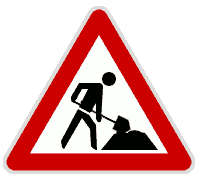10.2 Learning Objectives and Key Terms
Elizabeth B. Pearce
10.2.1 Learning Objectives
- Describe the settings and roles associated with working with people with disabilities, and people with substance use disorders.
- Explain the ways that intersectionality impacts people with disabilities, and people with substance use disorders.
- Analyze the characteristics, skills, and knowledge needed to work with people with disabilities, and people with substance use disorders.
10.2.2 Key Terms

Key terms are important vocabulary for understanding the content of the chapters. They will be bolded and defined via an in-text glossary the first time that they appear in the chapter.
Disability
A physical, cognitive or emotional condition that limits or prevents a person from performing tasks of daily living, carrying out work or household responsibilities, or engaging in leisure and social activities.
Handicap
A barrier that causes people with disabilities to be unable to independently complete tasks or activities, but has no impact on people without disabilities.
Functional Limitation
A disability-based restriction or inability to perform an action or activity in the same way others who do not have disabilities can do.
Congenital disability
A disability that occurs before or during birth; something the disabled person has had for all their life.
Acquired disability
A disability that occurs at some point after the disabled person is born. This could be something that happened to them as an infant or at any point afterward.
Hereditary disability
A disability caused by genetic mutations that are passed down from one or both parents. The disability could be congenital or acquired.
Medical Model of Disability
The presumption that the disabled person needs to be treated and “fixed;” this model focuses on what the individual cannot do and considers disability to be “abnormal.”
Social Model of Disability
The perspective that considers disability to be part of what makes the individual who they are. This model acknowledges disability-related limitations but also recognizes that disabled people have shared community, values and aspirations.
Reasonable Accommodation
A change in the usual and customary practice or activity which allows a disabled person to participate more independently in spite of the limitations their disability causes. Reasonable accommodations are most frequently found in educational and employment settings but can also include social settings. Accommodations can be made through structural changes, use of mechanical and technological devices, and reassignment of duties.
Service Animal
A dog or miniature horse that has been trained to perform specific tasks in order to assist a specific disabled person to maintain independence and/or to protect them from harm or death. Service animals work with people with all types of disabilities, including sensory losses, physical mobility, seizure disorders, chronic and persistent mental illness, diabetes and more. Service animals are considered working animals, not pets, and have legal authority to accompany their human partner anywhere they go.
Emotional Support Animal
Any animal that is used to provide companionship, relieve loneliness, and sometimes help with depression, anxiety, and certain phobias for individuals with mental health disabilities.. Emotional Support Animals can be any type of animal, but they have no specialized training related to disability. Other than being allowed in housing that is generally managed with a “no pets allowed” requirement, Emotional Support Animals have no legal status.
Therapy Animal
Any animal trained and certified to provide comfort and affection to people other than their handlers or owners. Therapy animals do not focus on the needs of their handlers but instead are socialized to be petted by anyone and are often found in hospitals, nursing homes, schools and other institutions. They may also work in clinical mental health settings under the control of their handlers.
Key terms for the justice-involved section of this chapter are under construction.
10.2.3 Licenses and Attributions for Learning Objectives and Key Terms
“Learning Objectives and Key Terms” by Elizabeth B. Pearce Sheila R. Hoover is licensed under CC BY 4.0.
